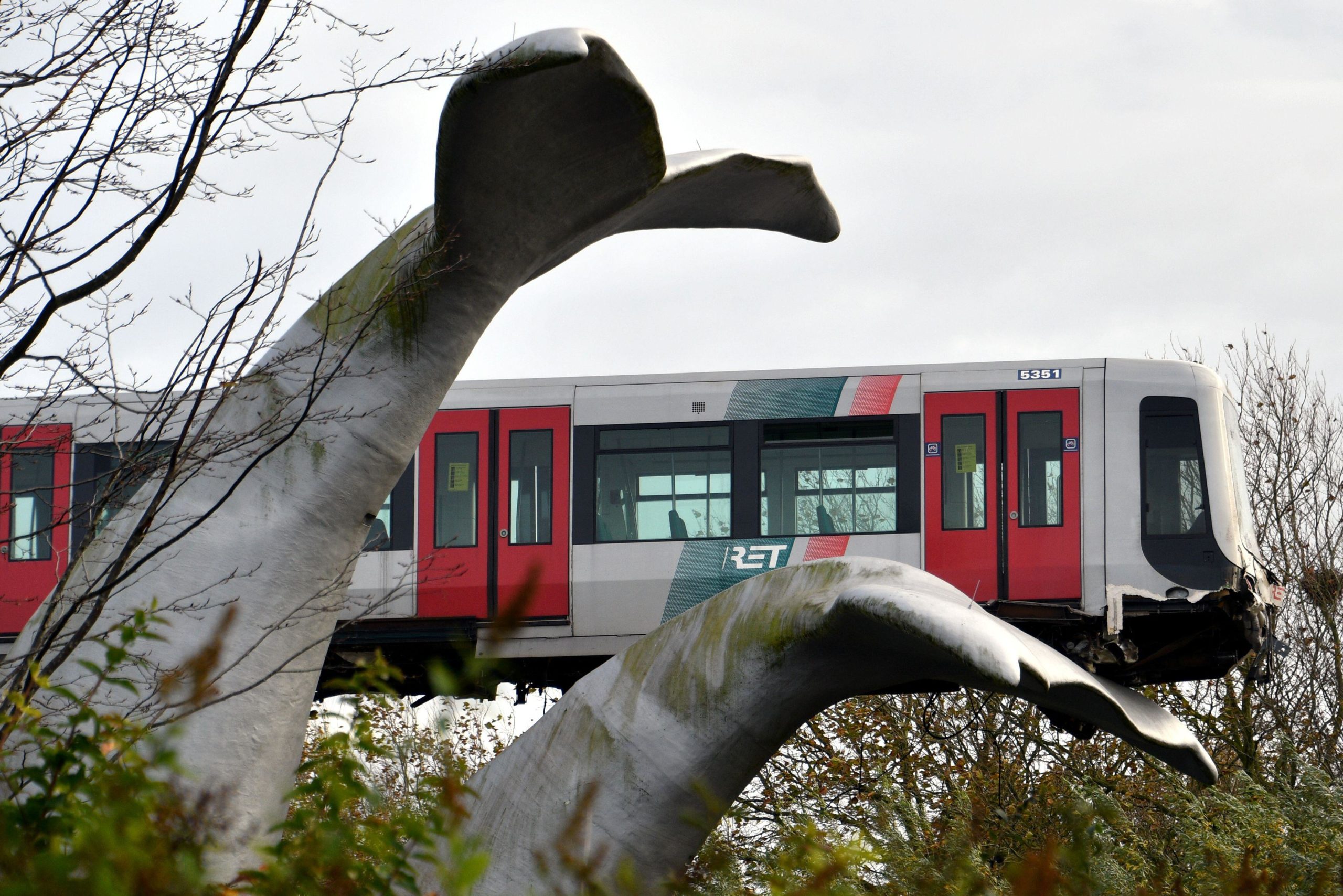
Can art save lives? Usually this is a pretty cerebral question, tied up with issues of cultural infrastructure, education, creative freedom, societal expectations and government funding. However, in Rotterdam recently, the answer was a resounding and very literal “yes”. At approximately 12.30am on 2 November, a runaway metro train crashed through the buffers at the end of the track in Spijkenisse, only to land atop a gigantic sculpture of a whale tail, thus escaping a catastrophic 30-foot drop. The driver, who was the sole person on board, was able to scramble to safety.
The life-saving piece of public art, which is rather aptly titled “Saved by the Whale’s Tail”, was conceived by architect Maarten Strujis some 20 years ago, as a way of placating residents who would lose some public space when the new rail track was installed. He was the first to admit that it was surprising the reinforced polyester structure—which creates the illusion of two cetaceans diving through the water—was able to sustain such pressure.
“The event is so absurd that it would easily induce an eye-roll if it was part of an action movie plot”
Shortly after the crash, photos of the remarkable scene went viral, as people delighted in the serendipity of it all. There was also something wonderful about the lack of drama surrounding this almost-tragic event. It occurred without an audience and avoiding injury, with footage showing subsequent onlookers breaking out into amused laughter, as opposed to shrieks of concern. The train was soon removed with caution and efficiency, and there is nothing to suggest the accident involved foul play.
The event is so absurd that it would easily induce an eye-roll if it was part of an action movie plot. In popular culture, we have become used to the blood-pumping thrill of an imminent catastrophe, followed by nail-biting, precarious suspense, and a final heroic triumph. However, in real life, the insidious threat of Covid-19 continues to dominate, political turmoil seems to play out in a never-ending spiral on the world stage, and the climate crisis is evermore disturbing. It is no wonder we are keen to find solace in an image that is both uplifting and ludicrous in equal measure.
“Perhaps we have all just become more accustomed to imminent catastrophe, and in turn are looking to grab on to any piece of fortuitous feel-good news that comes our way”
In an effort to find a broader symbolism within this serendipity, Strujis points to another work of art in Rotterdam: The BMW, by collective Kunst & Vaarwerk. It features a red car balanced on the edge of a wall as if it has just careened through the parking lot, and while it has been a local attraction since the 1980s, the very real circumstances surrounding The Whale Tail’s newfound fame renders it rather quaint by comparison. Perhaps we have all just become more accustomed to imminent catastrophe, and in turn are looking to grab on to any piece of fortuitous feel-good news that comes our way.
That said, it is ironic that a symbol of industrialisation—the train—was saved by an homage to an ancient species that roamed the planet for thousands of years, only to face extinction at the hands of human-led destruction. In 2020, it seems that every silver lining has a cloud.





